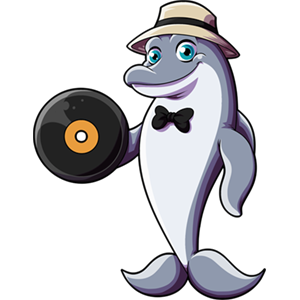Welcome to Finnley’s Audio Adventures, where we explore obscure, weird, hard to find, and interesting records. Today’s record takes us back in time to the mid-20th century and features a selection of jingles for various products, services, and entertainment.
The record is called “Music Spots Presents Music that Moves Merchandise” and has matrix codes of MS-5-59, UR 187A, and Δ32301. It has two sides with the following tracks:
Side One:
Regal Pale
Disneyland Hotel
Triumph
California City
National Paint
Hollywood Park
Side Two:
KANS #4
KANS #3
KANS #2
KANS #1
KBIG
Let’s take a closer look at each of these tracks and the stories behind them.
First up is Regal Pale, a brewery that operated in the United States during the mid-20th century. The brewery was originally named Regal Amber Brewing Company and was located in Los Angeles, California. The company produced three types of beer during the 1930s: Regal Amber Beer, Regal Amber Ale, and Blue Boar Ale. In 1954, the brewery was renamed Regal Pale Brewing Company and continued to produce beer until the early 1960s. Today, Regal Pale is remembered as a part of California’s brewing history, and its products are sought after by collectors of vintage beer memorabilia.
The next track takes us to the Disneyland Hotel, one of the most iconic hotels in Southern California. The hotel was designed by the architectural firm of Pereira & Luckman and opened its doors on October 5, 1955, which was nearly three months after the opening of Disneyland. The hotel was initially constructed as a relatively small 104-room motor inn but underwent numerous expansions and upgrades to become a popular destination for visitors to Disneyland. Today, the Disneyland Hotel remains an important part of the Disneyland experience.
The third track features the Triumph car company, a British automobile manufacturer that had a presence in the United States during the mid-20th century. The company produced a range of cars, including sports cars, sedans, and coupes, that were popular in both the UK and the US. Triumph first began exporting cars to the US in the 1950s and quickly gained a following among American car enthusiasts. Today, Triumph cars are prized by collectors for their classic styling and sporty performance.
The fourth track takes us to California City, a city located in the Mojave Desert in the state of California. The city was founded in the 1950s as a planned community designed to provide affordable housing for the growing population of Southern California. However, in the late 1950s, California City was the site of a major real estate scam that left many investors and homeowners in financial ruin. Today, California City is a functioning community, but the legacy of the real estate scam remains a cautionary tale for investors and developers alike.
The fifth track features National Paint, an established brand of paint products that was known for its high-quality paints, varnishes, enamels, and primers during the late 1950s. The company’s commitment to innovation and quality helped it to establish a loyal customer base and made it a respected name in the paint industry. Today, National Paint is remembered as a leader in the paint industry during the mid-20th century.
The final track takes us to Hollywood Park, a thoroughbred horse racing track located in Inglewood, California during the late 1950s. The track opened in 1938 and quickly became one of the premier horse racing destinations in the United States. During the
late 1950s, Hollywood Park was known for its high-quality racing events and glamorous atmosphere. The track hosted several prestigious horse races, including the Hollywood Gold Cup, the Californian Stakes, and the American Handicap. In addition to its racing events, Hollywood Park was also a popular destination for entertainment and dining. The track featured several restaurants and bars, as well as live music and other entertainment options. Overall, Hollywood Park was a beloved institution in the Southern California community during the late 1950s, and its legacy as one of the most iconic horse racing venues in the United States lives on.
Moving on to side two of the record, we have KANS-AM, a radio station located in Kansas City, Missouri, during the late 1950s. The station played a mix of popular music, including rock and roll, rhythm and blues, and country. KANS-AM was known for its live music programs, which featured performances by local and national musicians, as well as its news and talk programs, which covered local and national news and current events. Overall, KANS-AM was a popular radio station during the late 1950s, known for its diverse programming and commitment to live music and local news.
The final track on the record features KBIG-AM, a radio station based in Los Angeles, California but claimed to be from Catalina Island, during the late 1950s. The station played a mix of middle of the road and standards. KBIG-AM was known for its live music programs, which featured performances by local and national musicians, as well as its news and talk programs, which covered local and national news and current events. Overall, KBIG-AM was a popular radio station during the late 1950s, known for its diverse programming and commitment to live music and local news.
In conclusion, “Music Spots Presents Music that Moves Merchandise” is a fascinating record that provides a glimpse into the products, services, and entertainment of the mid-20th century. From Regal Pale to Hollywood Park, each track tells a unique story and takes us back in time to a different era. We hope you enjoyed this audio adventure with Finnley the Dolphin and look forward to exploring more obscure and interesting records in the future.
